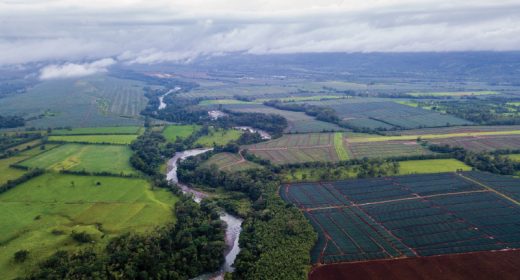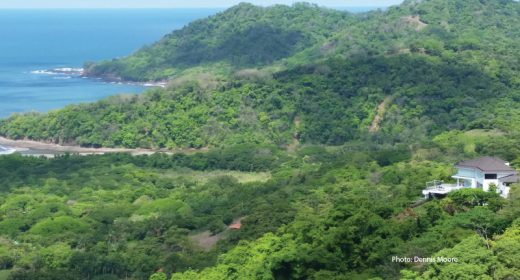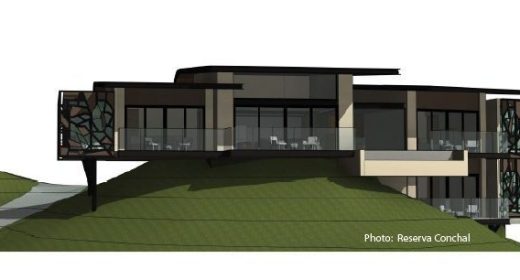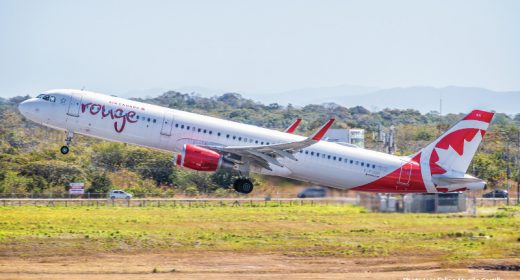
The Green Season That Really Counts
- NOV 13, 2016Warning: count(): Parameter must be an array or an object that implements Countable in /home/howlermag/public_html/old/wp-content/themes/new-paper/includes/general.php on line 193

Your Lead Paragrpah goes here
“Sittin’ in the sun, countin’ my money,
Those greenbacks on the trees.” Louis Armstrong
When you’re sick and tired of mud, it helps to recall that the official Costa Rican tourism term for
this time of year is “The Green Season.” Stands to reason. Brochures with pictures of rent-a-cars
sliding off roads, passengers up to their knees in mud holes or chest deep in rivers would likely
exceed the accepted boundaries of what is normally considered adventure tourism.
All in all it is nice to gaze around—a full 360 degrees—while traversing a landscape that is a far cry
from how it looked a short 6 months ago. What a difference close to 6 feet of rain makes, huh? The
renewal of the cycle of life in all its manifestations: fungi bursting out of burned stumps on the hills,
fish and crawdads fanning out and swimming up streams and rivulets, frogs singing love songs in
the ponds and the no see-ums and mosquitos sampling their way around the smorgasbord of
exposed skin
This year, most of my neighbors held off from planting the ‘primera’, the early corn planting,
normally in the ground by late May or early June. But, given the abundant rainfall of these last
couple months, the ‘postrera’, or late season planting, will be more than enough to provide a
bumper crop, almost like the good old days. OK, I’ll admit, that’s a bit of a stretch.
In the real old days, farmers would cut down a section of secondary forest regrowth, sometimes
burn it, and then plant. They would put in long hard hours during the rainy season, harvest, dry and
store the bounty in the sort of elevated granaries you still see in some homes, and then chill out
and enjoy the fiestas during the dry season. Just yesterday a friend recalled driving out of his dad’s
cornfield up in the hills behind Lola’s in Avellanes: 3 oxcarts, fully loaded with freshly harvested
corn. And to top it off, back then they didn’t even use fertilizer.
If you have a fondness for numbers, here’s some back of the envelope calculations to help
understand just why the soils were so productive, as they say, back in the day.
First recall that our area is, or was, characterized by a ‘wet-dry tropical forest’ ecosystem. The
productivity of any vegetation complex is dependent on a complex mix of factors from humidity, soil
type, elevation, etc., but a round number for our zone in ‘net primary productivity’ is about 15 tons
of dry matter per hectare per year. NPP as it’s called is the amount of CO2 from the air that gets
turned into sugars and starches, leaves and branches, roots and shoots all due to the miraculous
process of photosynthesis. And all that “stuff” is what we gardeners, farmers and landscapers call
organic matter, as we struggle to build it up in the soil or replace what has been lost in the ground
zero around new constructions.
The loss of forest cover and lower soil fertility may have undercut farming, but the fact of the matter
is, in the modern era, what really puts the bread on the table in Guanacaste comes from the rain of
tourism dollars that flows through the regional economy. Simply put, it’s not farming in this day and
age that allows people to bring home the bacon.
Face it, for centuries if not millennia, people have left farms—or been forced off by land theft or
government policies—and moved into the more formal economies of cities, where there is money
to be made without sweating in the mud. Here, they look for work along the coast. A recent article
in La Nación said that a quarter of the national workforce is employed in tourism. 25 years ago I
asked a local in Limon if he worked in the banana plantations. His reply, “No mon’ all dese guys are
from Guanacaste.” These days, young men hoping to get a leg up economically no longer have to
go into exile to the distant banana plantations, there’s a ton of work locally in construction, hotels,
etc.
Ironically, the height of the growing season is the deadest time of the year in terms of tourism. But
these October showers will soon give way to the balmy winds and sunny days of the season that
brings the rainfall of greenbacks, the sine qua non of life along the Gold Coast. I pen these words
in the midst of a torrential downpour. A timely reminder that without the life giving rains,
economically and otherwise, we’d all be left high and dry.
Tom Peifer is an ecological land use consultant with 20 years experience in Guanacaste.
2658-8018. tompeiferecv@gmail.com El Centro Verde is dedicated to researching and promoting
sustainable land use, permaculture and environmentally sound development http://
www.elcentroverde.org/









